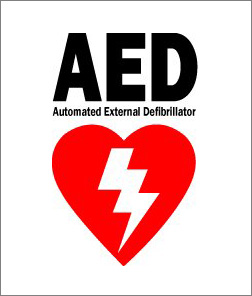When many people think of helping someone suffering from cardiac arrest, they immediately think of manual CPR. While it is true that CPR should be done immediately on a victim of cardiac arrest, what is often overlooked is the importance of quickly accessing an automated external defibrillator, or AED. Of course, CPR should still be a first priority – if there is no one else around to help the victim, immediately call 9-1-1 and begin CPR until help arrives. If the victim collapsed in a public setting, though, there should be a few bystanders nearby who can be asked to quickly find the nearest AED while someone performs CPR.
Manual CPR pumps blood and oxygen to the victims brain through a series of chest compressions and breaths. While this does help the victim, an AED takes it one step further by providing an electric shock to the victim’s heart. This shock, when given the right conditions, stops the heart’s fibrillation and allows it to return to its normal beating rhythm. The sooner an AED can be found and used on the victim, the better the victim’s chances are of survival.
Although it might sound complicated to someone who has not been trained in the use of an AED, these machines are actually quite simple to use and always come with detailed instructions. That being said, it is still very important for anyone being trained in CPR or first aid to also receive instruction on the use of an AED. Online AED classes are easy to find and usually inexpensive, and many training companies offer CPR and AED training as a package deal – just look for the AED symbol (a heart with a lightning bolt inside) when you purchase your CPR course. The more you know, the more prepared you are to help save someone’s live in the event of a cardiac emergency.



